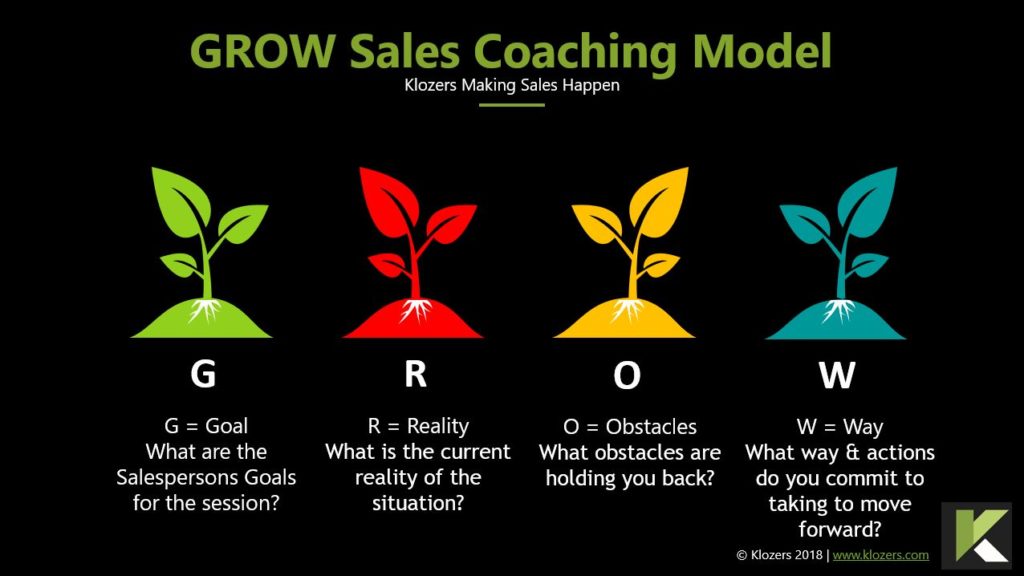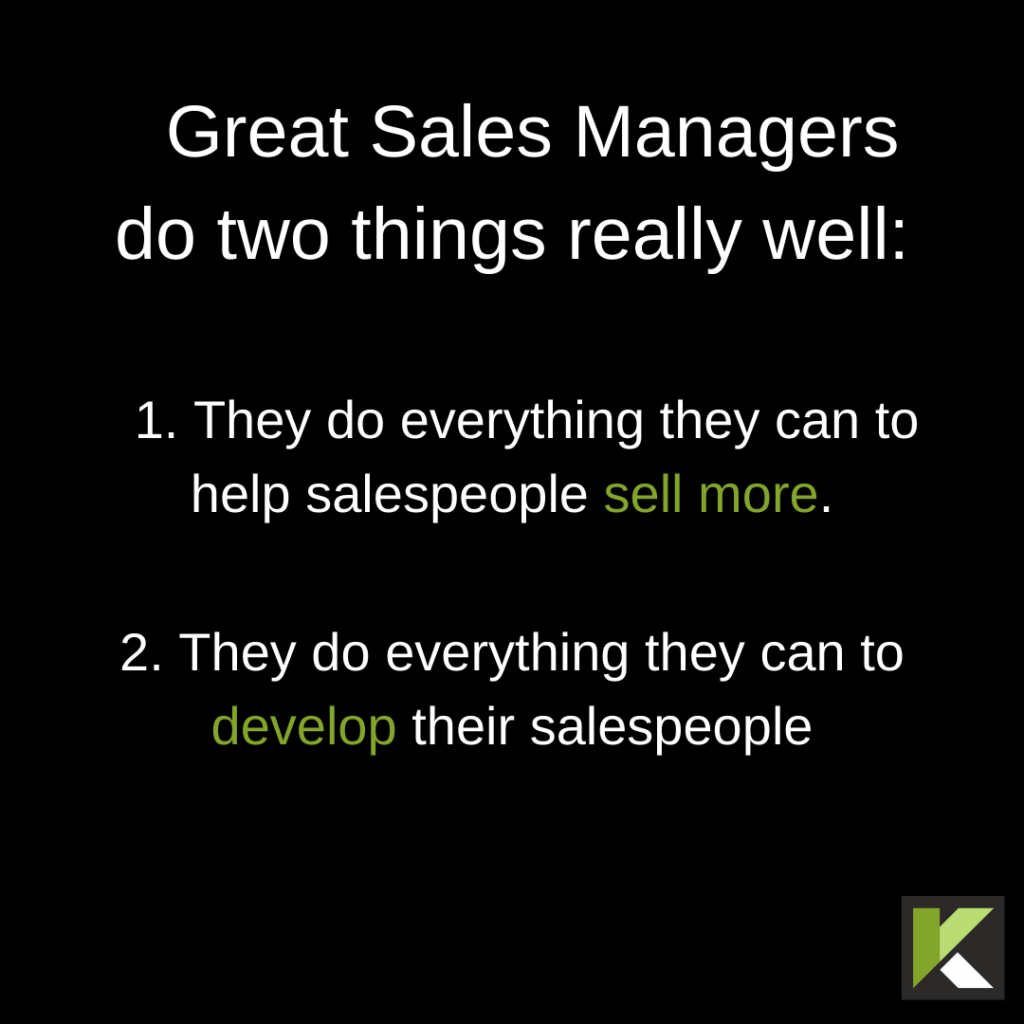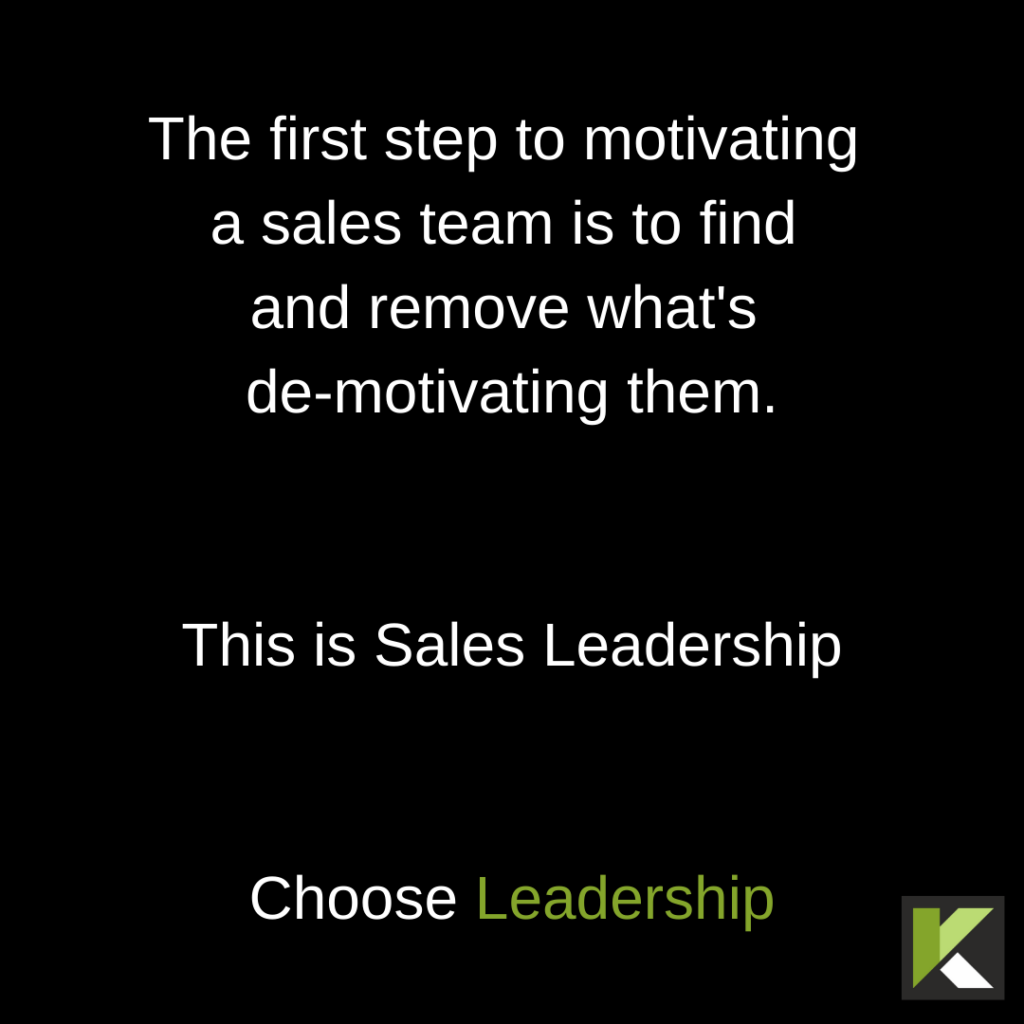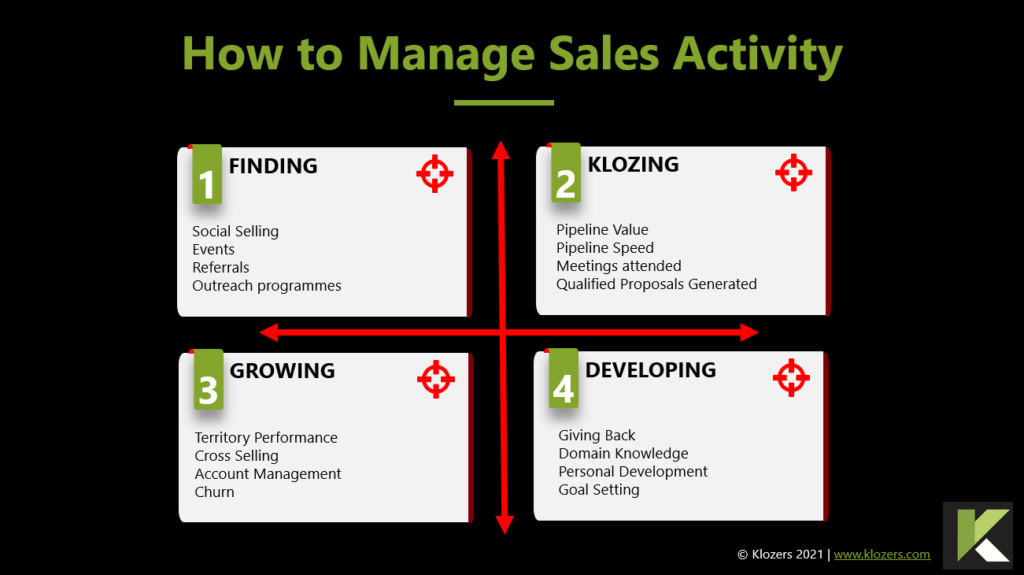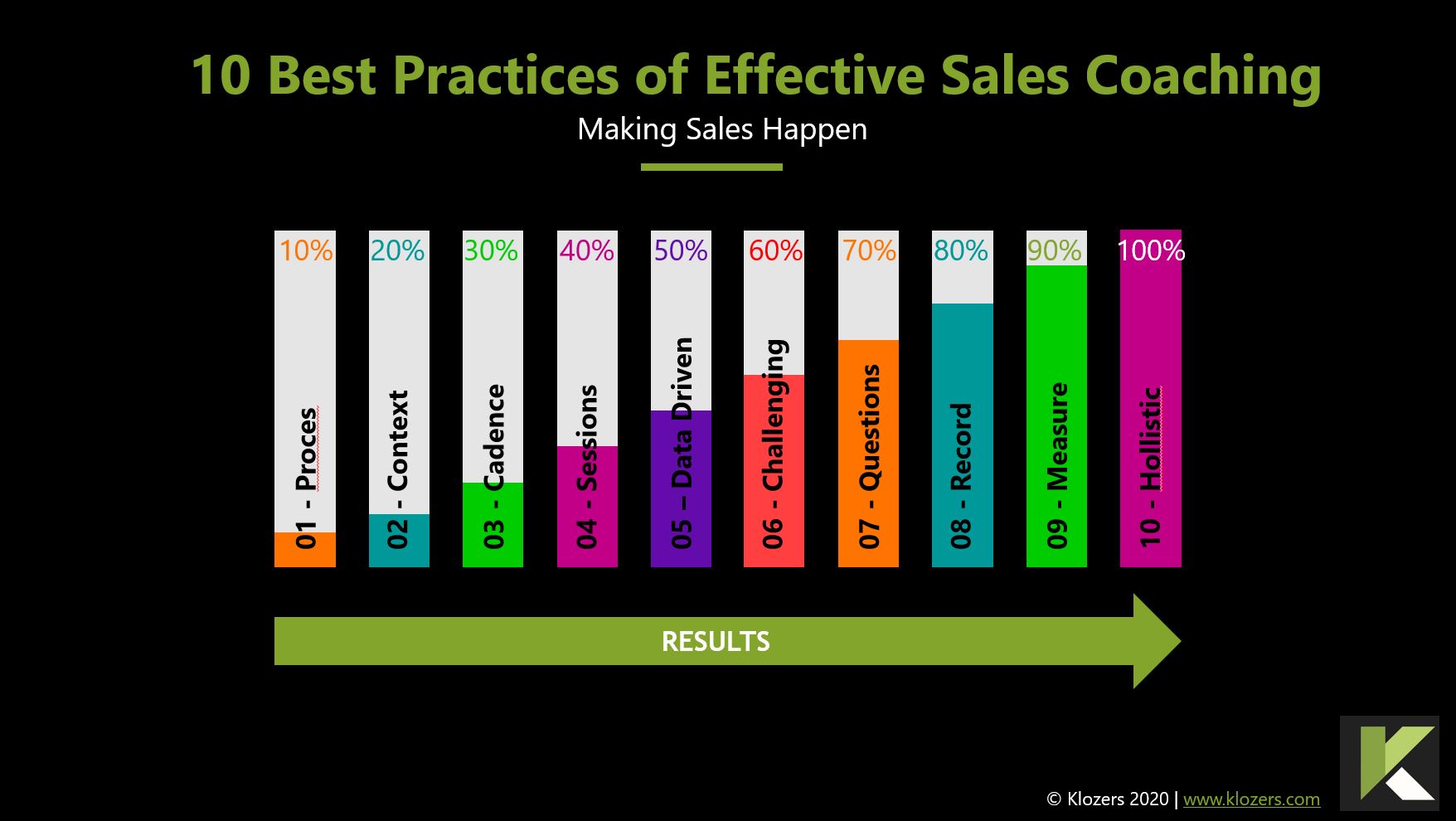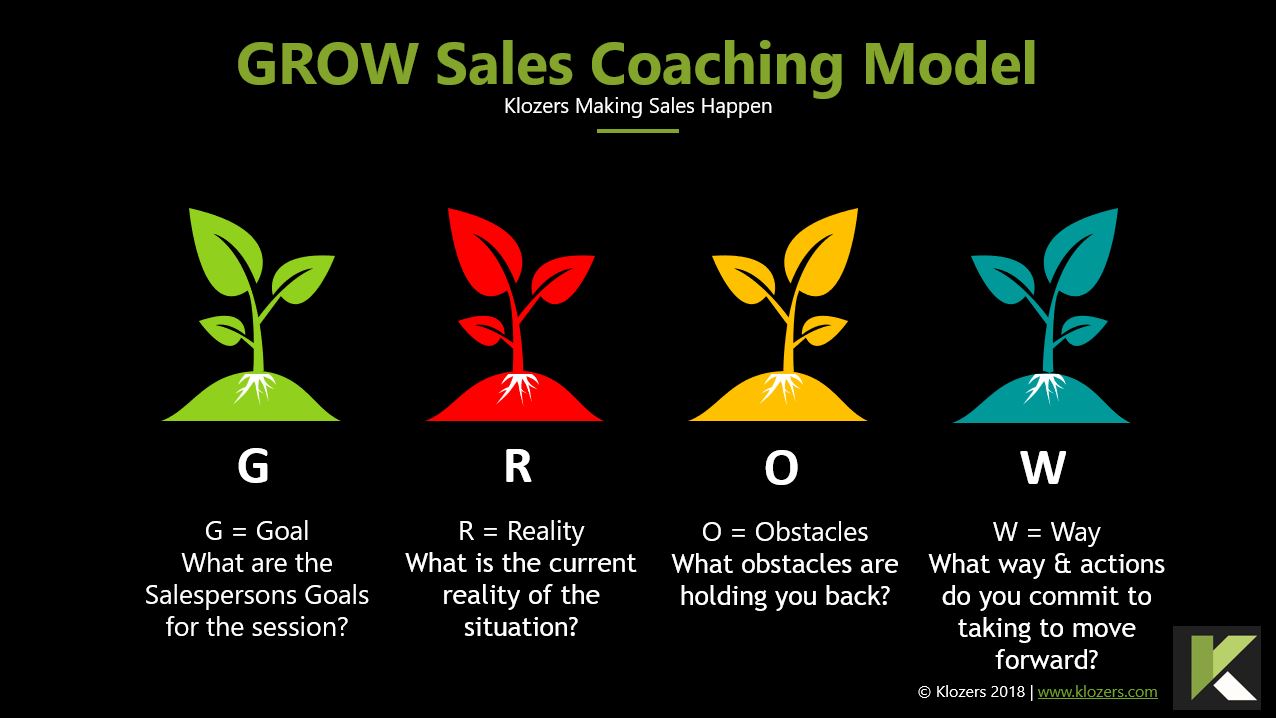Lepaskan Potensi Jualan anda | Upah Jurulatih Jualan
Jurulatih Jualan - Soalan Teratas daripada Google
Apa itu Jurulatih Jualan?
Jurulatih jualan ialah profesional yang membantu profesional jualan mengembangkan kemahiran dan pengetahuan mereka, dengan matlamat untuk meningkatkan prestasi jualan mereka. Jurulatih jualan boleh bekerja dengan individu atau kumpulan kecil wakil jualan, dan boleh menggunakan pelbagai teknik, seperti bimbingan satu-satu, main peranan dan aktiviti interaktif untuk membantu profesional jualan membangunkan kemahiran dan pengetahuan yang mereka perlukan. berjaya.
Jurulatih jualan mungkin memberi tumpuan kepada pelbagai topik, termasuk strategi jualan, teknik jualan, pengurusan perhubungan pelanggan, kemahiran komunikasi dan penyelesaian masalah. Mereka juga mungkin bekerjasama dengan pemimpin jualan, pengurus jualan dan profesional jualan untuk mengenal pasti dan mengatasi sebarang cabaran peribadi atau profesional yang mungkin menghalang prestasi jualan mereka.
Jurulatih jualan lazimnya adalah profesional jualan yang berpengalaman sendiri, dengan rekod prestasi yang terbukti dan mungkin mempunyai latar belakang dalam pengurusan jualan atau latihan. Mereka mungkin bekerja dengan profesional jualan di semua peringkat, daripada jurujual peringkat permulaan kepada pengurus jualan dan pemimpin jualan yang berpengalaman.
Secara keseluruhan, jurulatih jualan boleh menjadi sumber yang berharga untuk profesional jualan yang ingin meningkatkan kemahiran mereka dan meningkatkan prestasi jualan mereka.
Dalam artikel ini kita akan membincangkan...
Terdapat cara baharu untuk menyampaikan pertumbuhan jualan…
Jangan beli Latihan Jualan sehingga anda menonton video ini …
1. Apakah faedah bimbingan jualan?
Bimbingan jualan boleh menawarkan pelbagai manfaat kepada profesional jualan, pengurus jualan dan organisasi secara keseluruhan, termasuk:
a) Prestasi jualan yang lebih baik: Dengan membantu profesional jualan mengembangkan kemahiran dan pengetahuan mereka, bimbingan jualan boleh membantu meningkatkan prestasi jualan mereka. Ini mungkin termasuk peningkatan hasil jualan, kadar penukaran yang lebih tinggi dan kepuasan pelanggan yang lebih baik.
b) Meningkatkan keyakinan dan motivasi: Bimbingan jualan boleh membantu profesional jualan berasa lebih yakin dan bermotivasi dalam peranan mereka, yang boleh membawa kepada prestasi yang lebih baik.
c) Pembangunan peribadi: Bimbingan jualan biasanya lebih diperibadikan daripada latihan jualan, kerana ia disesuaikan dengan keperluan dan matlamat khusus individu atau kumpulan kecil. Ini boleh menjadikannya lebih berkesan dalam membantu profesional jualan mengembangkan kemahiran dan pengetahuan yang mereka perlukan untuk berjaya.
d) Akauntabiliti yang lebih besar: Bimbingan jualan selalunya melibatkan penetapan matlamat khusus dan penjejakan kemajuan, yang boleh membantu profesional jualan kekal bertanggungjawab dan bermotivasi untuk mencapai objektif mereka.
e) Budaya pasukan yang dipertingkatkan: Bimbingan jualan boleh membantu memupuk budaya pasukan yang positif dan menyokong, yang boleh membawa kepada kerjasama dan kerja berpasukan yang lebih baik.
Secara keseluruhan, bimbingan jualan boleh menjadi sumber yang berharga untuk profesional jualan dan organisasi yang ingin meningkatkan prestasi jualan dan mencapai kejayaan jangka panjang.
2. Kes perniagaan untuk bimbingan jualan
Berikut adalah beberapa statistik yang menyokong keperluan untuk bimbingan jualan:
a) Syarikat yang melabur dalam bimbingan jualan melihat purata peningkatan jualan sebanyak 8.9%: Menurut penyelidikan oleh Lembaga Eksekutif Korporat, syarikat yang melabur dalam bimbingan jualan melihat peningkatan purata jualan sebanyak 8.9% dalam tahun pertama.
b) Jurujual yang menerima bimbingan lebih berkemungkinan mencapai sasaran mereka: Penyelidikan oleh Majlis Eksekutif Jualan mendapati jurujual yang menerima bimbingan adalah 63% lebih berkemungkinan mencapai sasaran mereka berbanding mereka yang tidak menerima bimbingan.
c) Kejurulatihan membawa kepada peningkatan produktiviti: Kajian oleh Persekutuan Jurulatih Antarabangsa mendapati bahawa bimbingan membawa kepada peningkatan produktiviti sebanyak 86%.
d) Bimbingan membawa kepada pengekalan pekerja yang lebih baik: Menurut penyelidikan oleh Lembaga Eksekutif Korporat, syarikat yang mempunyai program bimbingan berkualiti tinggi mempunyai kadar pusing ganti 7% lebih rendah berbanding mereka yang tidak mempunyai program bimbingan.
e) Bimbingan membawa kepada kepuasan pelanggan yang lebih baik: Kajian oleh Lembaga Eksekutif Korporat mendapati bahawa syarikat yang mempunyai program bimbingan berkualiti tinggi mempunyai kadar kepuasan pelanggan 13.5% lebih tinggi berbanding dengan mereka yang tidak mempunyai program bimbingan.
Statistik ini menunjukkan kesan ketara yang boleh diberikan oleh bimbingan jualan terhadap prestasi jualan, produktiviti, pengekalan pekerja dan kepuasan pelanggan.

3. Bimbingan jualan individu vs Bimbingan jualan Kumpulan
Bimbingan jualan individu melibatkan bekerja dengan seorang profesional jualan secara satu-satu untuk membantu mereka mengembangkan kemahiran dan pengetahuan khusus. Jenis bimbingan ini biasanya lebih diperibadikan dan disesuaikan dengan keperluan dan matlamat khusus individu.
Bimbingan individu boleh dijalankan secara peribadi atau maya, dan mungkin melibatkan pelbagai topik seperti strategi jualan, pembangunan perniagaan dan panggilan jualan. Jurulatih jualan yang berkesan juga akan menyampaikan sesi satu lawan satu mengenai teknik, kitaran jualan, mengawal perbualan jualan, main peranan, aktiviti interaktif dan sesi maklum balas. Tugas jurulatih jualan adalah untuk membantu membina keyakinan dan menggalakkan wakil jualan untuk mencerminkan prestasi jualan mereka sendiri.
Bukan peranan jurulatih jualan untuk memotivasikan wakil. Prestasi terbaik dalam jualan adalah bermotivasi diri bukan sahaja oleh matlamat hasil dan lebih banyak jualan, tetapi oleh pembangunan profesional mereka sendiri.
Latihan kumpulan, sebaliknya, melibatkan bekerja dengan sekumpulan kecil profesional jualan untuk membantu mereka mengembangkan kemahiran dan pengetahuan mereka. Bimbingan kumpulan boleh dijalankan secara peribadi atau maya, dan mungkin melibatkan pelbagai teknik, seperti perbincangan kumpulan, aktiviti interaktif dan lakonan.
Bimbingan kumpulan boleh menjadi cara yang berkesan untuk membantu profesional jualan belajar antara satu sama lain dan berkongsi amalan terbaik. Jurulatih jualan yang berkesan boleh menghadiri mesyuarat pasukan, menyokong mesyuarat jualan mingguan dan memacu peningkatan prestasi merentas pasukan jualan.
Secara keseluruhan, bimbingan individu dan kumpulan boleh menjadi pendekatan yang berkesan untuk pembangunan jualan, dan pendekatan yang paling sesuai akan bergantung pada keperluan dan matlamat khusus pasukan jualan atau individu, serta sumber dan masa yang tersedia untuk pembangunan.
4. Bagaimanakah cara saya membuat program bimbingan jualan
Mewujudkan program bimbingan jualan boleh menjadi proses yang kompleks yang memerlukan perancangan yang teliti dan perhatian terhadap perincian. Berikut ialah beberapa langkah yang perlu dipertimbangkan semasa membuat program bimbingan jualan yang berkesan:
a) Tentukan matlamat anda: Tentukan dengan jelas matlamat anda untuk program bimbingan. Apa yang anda ingin capai? Apakah kemahiran atau pengetahuan khusus yang anda ingin kembangkan dalam pasukan jualan anda? Mempunyai matlamat yang jelas akan membantu anda mereka bentuk program yang memenuhi keperluan anda dan membantu anda mencapai objektif anda.
b) Kenal pasti khalayak sasaran anda: Tentukan untuk siapa program bimbingan anda. Adakah ia untuk seluruh pasukan jualan anda, atau hanya kumpulan tertentu? Memahami khalayak sasaran anda akan membantu anda menyesuaikan program untuk memenuhi keperluan dan matlamat khusus mereka.
c) Tentukan format: Tentukan format program bimbingan anda. Adakah ia secara peribadi, maya atau gabungan kedua-duanya? Pertimbangkan faktor seperti kemudahan, kos dan keutamaan khalayak sasaran anda apabila memilih format.
d) Pilih jurulatih: Pilih jurulatih yang mempunyai pengalaman dan kepakaran untuk memenuhi keperluan anda. Pertimbangkan faktor seperti latar belakang mereka, gaya bimbingan mereka, dan ketersediaan mereka semasa memilih jurulatih.
e) Buat jadual: Tentukan kekerapan dan tempoh sesi bimbingan anda. Adakah mereka mingguan, dua mingguan atau bulanan? Berapa lamakah setiap sesi? Pertimbangkan jadual peserta anda dan matlamat program anda semasa membuat jadual.
f) Rancang kandungan: Reka kandungan program bimbingan anda untuk memenuhi matlamat khusus anda dan keperluan khalayak sasaran anda. Ini mungkin termasuk topik seperti teknik jualan, pengurusan perhubungan pelanggan.
5. Bagaimana anda melatih seorang jurujual?
Melatih jurujual boleh menjadi pengalaman yang bermanfaat dan mencabar, kerana ia memerlukan kemahiran komunikasi yang kuat, pemahaman yang mendalam tentang teknik jualan dan keupayaan untuk menyesuaikan diri dengan keperluan dan matlamat individu wakil jualan. Berikut ialah beberapa langkah yang perlu dipertimbangkan semasa melatih jurujual:
a) Wujudkan hubungan kepercayaan dan hormat: Membina kepercayaan dan rasa hormat adalah penting untuk sebarang hubungan bimbingan. Ini mungkin melibatkan mewujudkan jangkaan yang jelas, bersikap terbuka dan jujur dengan maklum balas, dan menunjukkan minat yang tulen dalam pembangunan jurujual.
b) Kenal pasti kekuatan jurujual dan bidang untuk penambahbaikan: Menilai kekuatan jurujual dan bidang untuk penambahbaikan boleh membantu anda menyesuaikan bimbingan anda dengan keperluan dan matlamat khusus mereka. Ini mungkin melibatkan pemerhatian interaksi jualan mereka, menyemak data prestasi mereka dan meminta maklum balas daripada jurujual dan rakan sekerja mereka.
c) Tetapkan matlamat khusus yang boleh diukur: Menetapkan matlamat yang khusus dan boleh diukur boleh membantu jurujual kekal fokus dan bermotivasi, serta boleh menyediakan peta jalan untuk pembangunan mereka. Pertimbangkan untuk menetapkan matlamat jangka pendek dan jangka panjang, dan pastikan anda menjejaki kemajuan dengan kerap.
d) Menyediakan sokongan dan maklum balas berterusan: Tawarkan sokongan dan maklum balas berterusan untuk membantu jurujual mengembangkan kemahiran dan pengetahuan mereka. Ini mungkin melibatkan sesi bimbingan satu lawan satu, main peranan atau aktiviti interaktif lain yang membolehkan jurujual mempraktikkan dan menggunakan apa yang telah mereka pelajari.
e) Galakkan refleksi kendiri dan pembelajaran berterusan: Galakkan jurujual untuk merenung prestasi mereka dan mencari peluang untuk pembelajaran berterusan. Ini mungkin melibatkan menggalakkan mereka membaca penerbitan industri, menghadiri latihan.

6. Apakah teknik bimbingan jualan yang terbaik?
Terdapat pelbagai teknik bimbingan jualan yang boleh berkesan dalam membantu profesional jualan mengembangkan kemahiran dan pengetahuan mereka. Berikut adalah beberapa contoh:
a) Bimbingan satu lawan satu: Bimbingan satu lawan satu melibatkan bekerja dengan profesional jualan secara satu sama satu untuk membantu mereka mengembangkan kemahiran dan pengetahuan khusus. Jenis bimbingan ini biasanya lebih diperibadikan dan disesuaikan dengan keperluan dan matlamat khusus individu.
b) Main peranan: Main peranan melibatkan simulasi situasi jualan sebenar dan membenarkan profesional jualan mempraktikkan dan menggunakan apa yang telah mereka pelajari. Ini boleh menjadi teknik yang berguna untuk membantu profesional jualan mengembangkan kemahiran komunikasi dan penyelesaian masalah mereka.
c) Aktiviti interaktif: Aktiviti interaktif, seperti kajian kes atau simulasi, boleh menjadi cara yang berguna untuk melibatkan profesional jualan dan membantu mereka menggunakan pengetahuan mereka kepada situasi dunia sebenar.
d) Bimbingan kumpulan: Bimbingan kumpulan melibatkan bekerja dengan sekumpulan kecil profesional jualan untuk membantu mereka mengembangkan kemahiran dan pengetahuan mereka. Bimbingan kumpulan mungkin melibatkan perbincangan kumpulan, aktiviti interaktif dan lakonan, dan boleh menjadi cara yang berkesan untuk membantu profesional jualan belajar antara satu sama lain dan berkongsi amalan terbaik.
e) Sesi maklum balas: Memberi maklum balas berterusan boleh menjadi teknik yang berharga untuk membantu profesional jualan meningkatkan prestasi mereka. Sesi maklum balas harus dijalankan dengan cara yang membina dan menyokong, dan harus memberi tumpuan kepada bidang tertentu untuk penambahbaikan.
Secara keseluruhan, teknik bimbingan jualan terbaik akan bergantung pada keperluan dan matlamat khusus pasukan jualan atau individu, serta sumber dan masa yang tersedia untuk pembangunan.
7. Contoh soalan sales coaching
Terdapat pelbagai soalan bimbingan jualan yang boleh berkesan dalam membantu profesional jualan mengembangkan kemahiran dan pengetahuan mereka. Berikut adalah beberapa contoh:
-
Apakah matlamat khusus anda untuk sesi bimbingan ini?
-
Apakah cabaran semasa anda dalam proses jualan?
-
Apakah yang anda rasa yakin tentang pendekatan jualan anda?
-
Apakah bidang anda untuk penambahbaikan dalam pendekatan jualan anda?
-
Bagaimanakah anda mengendalikan bantahan daripada prospek pada masa ini?
-
Bagaimanakah anda membina hubungan dengan prospek dan pelanggan pada masa ini?
-
Bagaimanakah anda membuat susulan dengan prospek dan pelanggan pada masa ini?
-
Bagaimanakah anda mengukur prestasi jualan anda pada masa ini?
-
Apakah beberapa amalan atau strategi terbaik yang telah berkesan untuk anda pada masa lalu?
-
Apakah sumber atau sokongan yang anda perlukan untuk mencapai matlamat anda?
Soalan bimbingan jualan harus disesuaikan dengan keperluan dan matlamat khusus profesional jualan atau kumpulan kecil, dan harus direka bentuk untuk menggalakkan refleksi, pembelajaran dan tindakan. Dengan bertanya soalan yang bernas dan disasarkan, jurulatih jualan boleh membantu profesional jualan mengenal pasti bidang untuk penambahbaikan, membangunkan strategi dan pendekatan baharu serta menjejaki kemajuan mereka ke arah matlamat mereka.
8. Apakah kemahiran yang diperlukan oleh jurulatih jualan?
Jurulatih Jualan yang baik memerlukan pelbagai kemahiran untuk melatih wakil jualan dengan berkesan termasuk:
a) Kepakaran jualan: Jurulatih harus mempunyai pemahaman yang mendalam tentang teknik jualan, pengurusan perhubungan pelanggan dan proses jualan. Ini mungkin melibatkan latar belakang dalam pengurusan atau latihan jualan, atau mempunyai pengalaman yang luas sebagai profesional jualan.
b) Kemahiran komunikasi: Jurulatih harus mempunyai kemahiran komunikasi yang kuat, termasuk kebolehan untuk mendengar secara aktif, bertanya soalan yang menjelaskan, dan memberikan maklum balas dengan cara yang membina dan menyokong.
c) Kemahiran bimbingan: Jurulatih harus mempunyai pemahaman yang kuat tentang prinsip dan teknik bimbingan, termasuk cara menetapkan matlamat, memberikan maklum balas, dan memudahkan pembelajaran dan pembangunan.
d) Kebolehsuaian: Jurulatih harus dapat menyesuaikan diri dengan keperluan dan matlamat khusus jurujual yang bekerja dengan mereka, serta kepada sebarang perubahan dalam persekitaran jualan.
e) Empati: Jurulatih seharusnya dapat menunjukkan empati dan pemahaman terhadap cabaran dan kebimbangan jurujual yang bekerja dengan mereka, yang boleh membantu membina kepercayaan dan hubungan.
Dengan membangunkan kemahiran ini, jurulatih boleh menjadi lebih berkesan dalam membantu profesional jualan mengembangkan kemahiran dan pengetahuan mereka, serta meningkatkan prestasi jualan mereka.
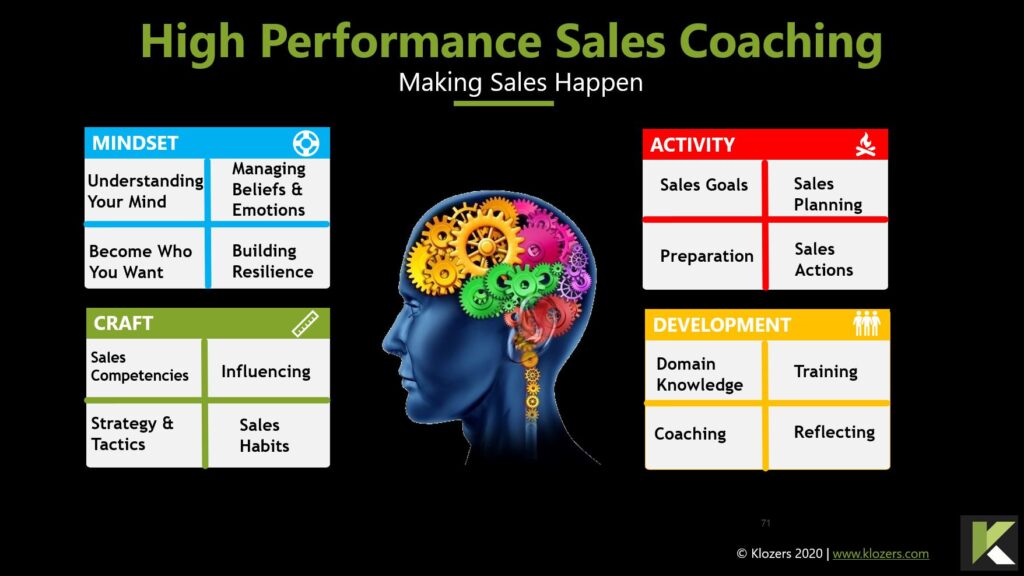
9. Adakah pengurus jualan memerlukan jurulatih jualan?
Pengurus jualan boleh mendapat manfaat daripada bimbingan jualan seperti yang boleh dilakukan oleh profesional jualan. Malah, bimbingan jualan boleh menjadi sangat berharga untuk setiap pengurus jualan, kerana mereka sering mempunyai tanggungjawab yang lebih besar untuk memimpin dan membangunkan pasukan jualan mereka.
Bimbingan jualan boleh membantu pengurus jualan membangunkan pelbagai kemahiran, termasuk:
-
Kemahiran kepimpinan: Bimbingan jualan boleh membantu pengurus jualan mengembangkan kemahiran kepimpinan mereka, seperti komunikasi, delegasi dan pembinaan pasukan.
-
Teknik jualan: Pengurus jualan boleh mendapat manfaat daripada bimbingan jualan untuk membantu mereka sentiasa mengikuti perkembangan teknik jualan terkini dan amalan terbaik.
-
Kemahiran melatih: Pengurus jualan yang bertanggungjawab melatih ahli pasukan mereka boleh mendapat manfaat daripada bimbingan jualan untuk membantu mereka mengembangkan kemahiran dan teknik bimbingan mereka.
-
Penyelesaian masalah: Pengurus jualan sering menghadapi pelbagai cabaran, seperti mengurus pelanggan yang sukar atau menavigasi persekitaran jualan yang kompleks. Bimbingan jualan boleh membantu mereka membangunkan kemahiran menyelesaikan masalah dan strategi untuk menangani cabaran ini.
Secara keseluruhan, bimbingan jualan boleh menjadi sumber yang berharga untuk mana-mana pengurus jualan yang ingin mengembangkan kemahiran dan pengetahuan mereka, dan meningkatkan prestasi mereka dan juga wakil jualan mereka.
10. Apakah peranan yang harus dimainkan oleh kepimpinan jualan dalam bimbingan jualan?
Kepimpinan jualan memainkan peranan penting dalam bimbingan, kerana mereka bertanggungjawab untuk menetapkan nada dan hala tuju untuk pembangunan pasukan. Berikut ialah beberapa cara kepimpinan jualan boleh menyokong bimbingan dalam organisasi mereka:
-
Wujudkan budaya bimbingan: Kepimpinan jualan boleh membantu mewujudkan budaya bimbingan dengan menekankan kepentingan pembelajaran dan pembangunan berterusan, dan dengan menyediakan sumber dan sokongan untuk usaha bimbingan.
-
Tetapkan matlamat dan jangkaan yang jelas: Kepimpinan jualan harus menyampaikan matlamat dan jangkaan yang jelas untuk bimbingan jualan, dan memastikan usaha bimbingan adalah sejajar dengan matlamat dan objektif keseluruhan organisasi.
-
Sediakan sumber dan sokongan: Kepimpinan jualan harus menyediakan sumber dan sokongan yang diperlukan untuk membolehkan bimbingan yang berkesan, seperti bahan latihan, alat bimbingan dan masa bimbingan khusus.
-
Galakkan refleksi kendiri dan pembelajaran berterusan: Kepimpinan jualan boleh menggalakkan profesional jualan untuk melibatkan diri dalam refleksi kendiri dan pembelajaran berterusan dengan mengetepikan masa khusus untuk bimbingan, menyediakan akses kepada sumber dan latihan, serta mengiktiraf dan memberi ganjaran kepada usaha mereka yang terlibat dalam bimbingan. aktiviti.
-
Tingkah laku bimbingan model: Kepimpinan jualan harus memodelkan tingkah laku bimbingan dengan menunjukkan komitmen terhadap pembelajaran dan pembangunan berterusan, dan dengan memberikan maklum balas yang menyokong dan membina kepada profesional jualan.
Secara keseluruhan, kepimpinan jualan memainkan peranan penting dalam mewujudkan budaya bimbingan dan menyokong pembangunan profesional jualan dalam organisasi.
11. Apakah perbezaan antara bimbingan jualan dan latihan jualan?
Latihan jualan dan latihan jualan ialah dua pendekatan berbeza untuk pembangunan jualan yang boleh digunakan untuk membantu profesional jualan meningkatkan kemahiran dan pengetahuan mereka.
Latihan jualan ialah program berstruktur yang direka untuk membantu profesional jualan membangunkan kemahiran dan pengetahuan khusus. Ia mungkin melibatkan pelbagai kaedah penyampaian, seperti kuliah, aktiviti interaktif dan simulasi, dan mungkin disampaikan secara peribadi atau secara maya. Latihan jualan biasanya bersifat lebih umum dan tertumpu pada menyediakan profesional jualan dengan pelbagai kemahiran dan pengetahuan yang boleh mereka gunakan dalam pelbagai situasi.
Bimbingan jualan, sebaliknya, adalah pendekatan yang lebih diperibadikan yang disesuaikan dengan keperluan dan matlamat khusus profesional jualan atau kumpulan kecil. Bimbingan jualan mungkin melibatkan sesi satu lawan satu dengan jurulatih, main peranan dan aktiviti interaktif, dan biasanya lebih tertumpu pada membantu profesional jualan menggunakan perkara yang telah mereka pelajari pada cabaran atau situasi tertentu. Bimbingan jualan juga mungkin melibatkan penetapan matlamat khusus dan penjejakan kemajuan untuk membantu profesional jualan kekal bermotivasi dan bertanggungjawab.
Secara keseluruhan, perbezaan utama antara latihan jualan dan latihan jualan ialah tahap pemperibadian dan tumpuan pada matlamat dan cabaran tertentu. Kedua-dua pendekatan boleh menjadi sumber yang berharga untuk profesional jualan yang ingin meningkatkan kemahiran dan pengetahuan mereka, dan pendekatan yang paling sesuai akan bergantung pada keperluan dan matlamat khusus pasukan jualan atau individu, serta sumber dan masa yang tersedia untuk pembangunan.
12. Adakah saya memerlukan latar belakang dalam bidang jualan untuk menjadi jurulatih jualan?
Mempunyai latar belakang dalam jualan boleh memberi manfaat kepada jurulatih jualan, kerana ia boleh memberikan anda pemahaman yang mendalam tentang teknik jualan, pengurusan perhubungan pelanggan dan proses jualan. Walau bagaimanapun, ia tidak semestinya menjadi keperluan untuk bimbingan jualan yang berjaya.
Jurulatih jualan mungkin datang dari pelbagai latar belakang, dan mungkin mempunyai kepakaran dalam bidang seperti kepimpinan, pembangunan perniagaan, komunikasi dan teknik bimbingan. Apa yang paling penting bagi jurulatih jualan ialah keupayaan untuk memahami keperluan dan matlamat profesional jualan yang mereka bekerjasama, dan untuk memberikan sokongan dan bimbingan untuk membantu mereka mengembangkan kemahiran dan pengetahuan mereka.
Secara keseluruhan, walaupun latar belakang dalam jualan boleh memberi manfaat kepada jurulatih, ia bukan satu-satunya faktor yang menentukan keberkesanannya. Kualiti yang paling penting untuk jurulatih jualan adalah keupayaan untuk memahami keperluan dan matlamat pelanggan mereka, dan untuk memberikan sokongan dan bimbingan untuk membantu mereka mencapai kejayaan.
“Pengalaman pembelajaran yang hebat”
Amanda – Pengurus Akaun






